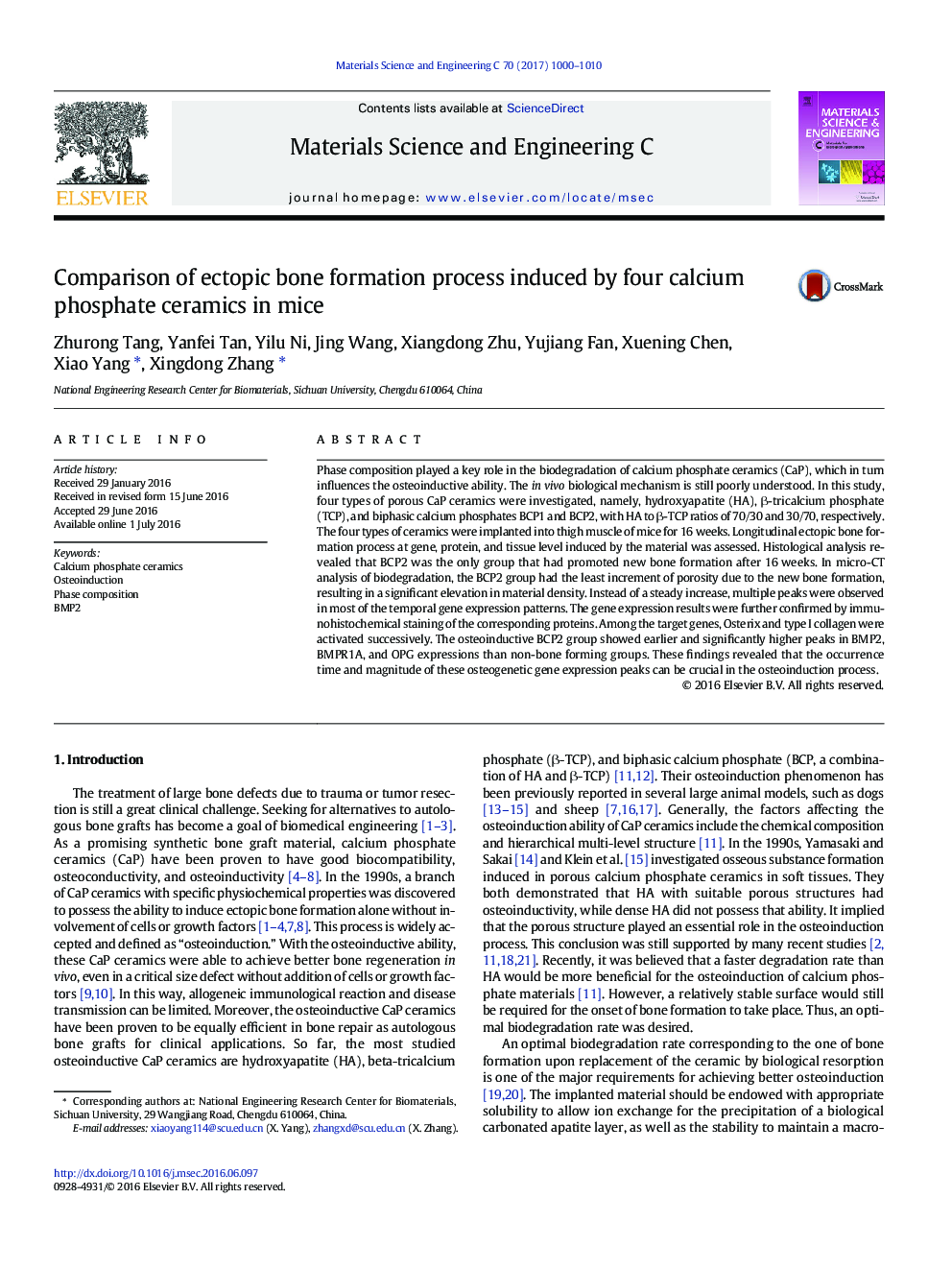| Article ID | Journal | Published Year | Pages | File Type |
|---|---|---|---|---|
| 7866739 | Materials Science and Engineering: C | 2017 | 11 Pages |
Abstract
Phase composition played a key role in the biodegradation of calcium phosphate ceramics (CaP), which in turn influences the osteoinductive ability. The in vivo biological mechanism is still poorly understood. In this study, four types of porous CaP ceramics were investigated, namely, hydroxyapatite (HA), β-tricalcium phosphate (TCP), and biphasic calcium phosphates BCP1 and BCP2, with HA to β-TCP ratios of 70/30 and 30/70, respectively. The four types of ceramics were implanted into thigh muscle of mice for 16 weeks. Longitudinal ectopic bone formation process at gene, protein, and tissue level induced by the material was assessed. Histological analysis revealed that BCP2 was the only group that had promoted new bone formation after 16 weeks. In micro-CT analysis of biodegradation, the BCP2 group had the least increment of porosity due to the new bone formation, resulting in a significant elevation in material density. Instead of a steady increase, multiple peaks were observed in most of the temporal gene expression patterns. The gene expression results were further confirmed by immunohistochemical staining of the corresponding proteins. Among the target genes, Osterix and type I collagen were activated successively. The osteoinductive BCP2 group showed earlier and significantly higher peaks in BMP2, BMPR1A, and OPG expressions than non-bone forming groups. These findings revealed that the occurrence time and magnitude of these osteogenetic gene expression peaks can be crucial in the osteoinduction process.
Related Topics
Physical Sciences and Engineering
Materials Science
Biomaterials
Authors
Zhurong Tang, Yanfei Tan, Yilu Ni, Jing Wang, Xiangdong Zhu, Yujiang Fan, Xuening Chen, Xiao Yang, Xingdong Zhang,
